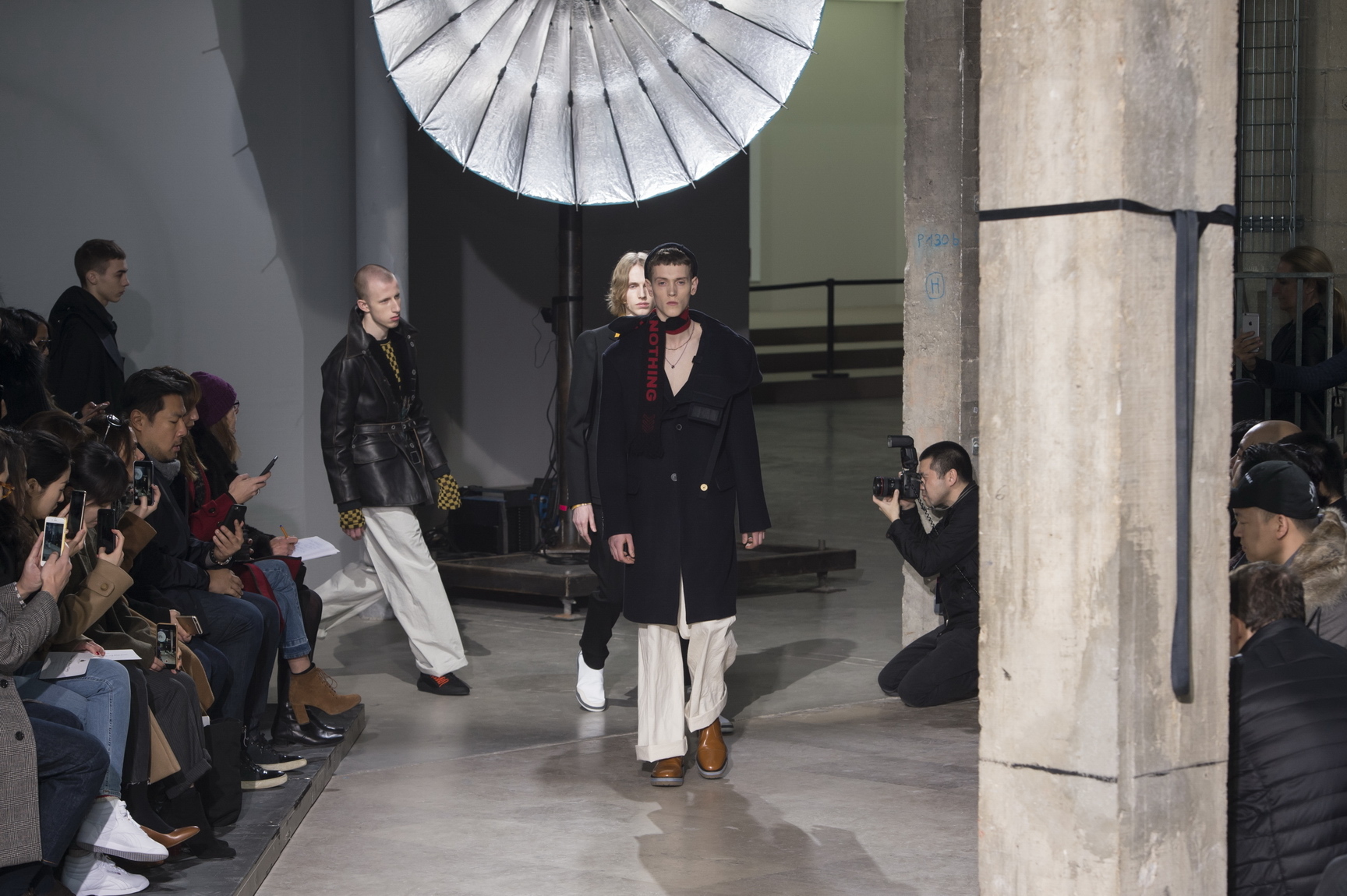It can’t be an easy task reporting on trends at fashion week these days. Rather than heel heights and hemlines, men and women are buying into looks, tendencies, and zeitgeists — Alessandro Michele’s urban baroque at Gucci being the best example. He wasn’t on the menswear schedule this season, having decided to merge his men’s collection into his women’s show in February instead, along with a number of other designers. The winds of change have created a strange new men’s fashion week where there seem to be as many women’s looks in a show as there’s menswear, and you’re not totally sure if you’re watching a men’s mainline show with mainline women’s, or women’s pre-collection, or haute couture, or just menswear on women. Add to that the collaborations that seem to fill up every show, and there’s suddenly a lot to keep track of.

It’s put us in a state of fashion week limbo, where we can probably expect to see as much menswear in the women’s shows come February — and then start to figure out if it’s see-now-buy-now on top, if part of it is a limited edition collaboration, or if we have to wait six old-fashioned months to buy it. It’s the early beginnings of the biggest fashion revolution since the emergence of ready-to-wear half a century ago, and it won’t be a quick or easy transition. For some designers, merging their collections is natural, as in the case of Paul Smith, who did it on Sunday on the last day of men’s shows in Paris. For others, that’s not necessarily the case.
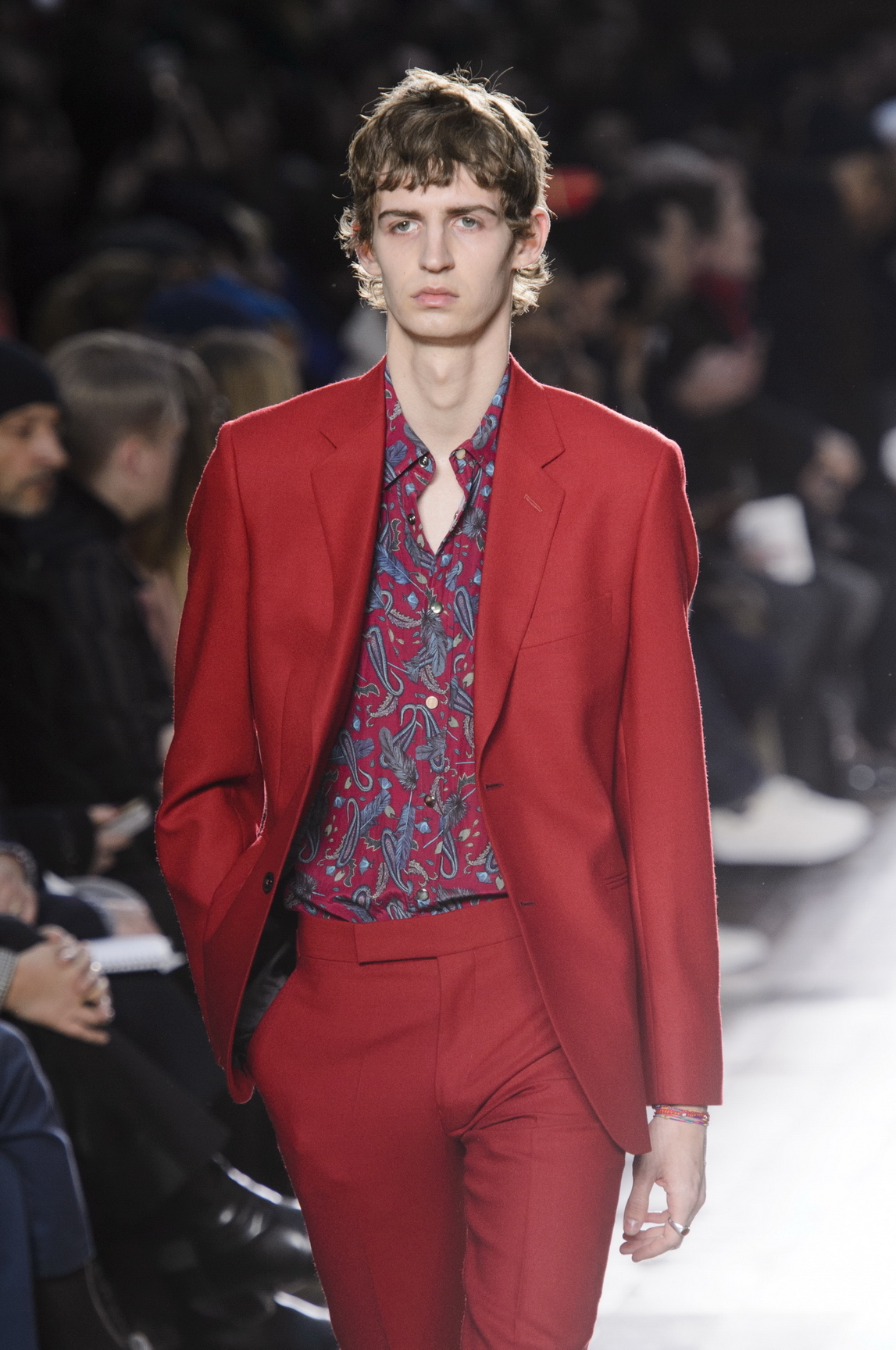
“It just reminded me why I started doing clothes for women, which was because people like Grace Coddington and Liz Tilberes, Peter Lindbergh and all of those people were photographing my men’s clothes on Linda Evangelista etcetera,” Sir Paul Smith said backstage. “That’s the reason I started my women’s collections, so it was a lovely thing to be able to show things like how I started.” He sent out co-ed looks in vivacious choreography, beaming male and female models looking at guests as they strolled down the runway of the Beaux Arts in their his-and-hers Paul Smith check suits, paisley jacquard tailoring, and fair-isle knits.
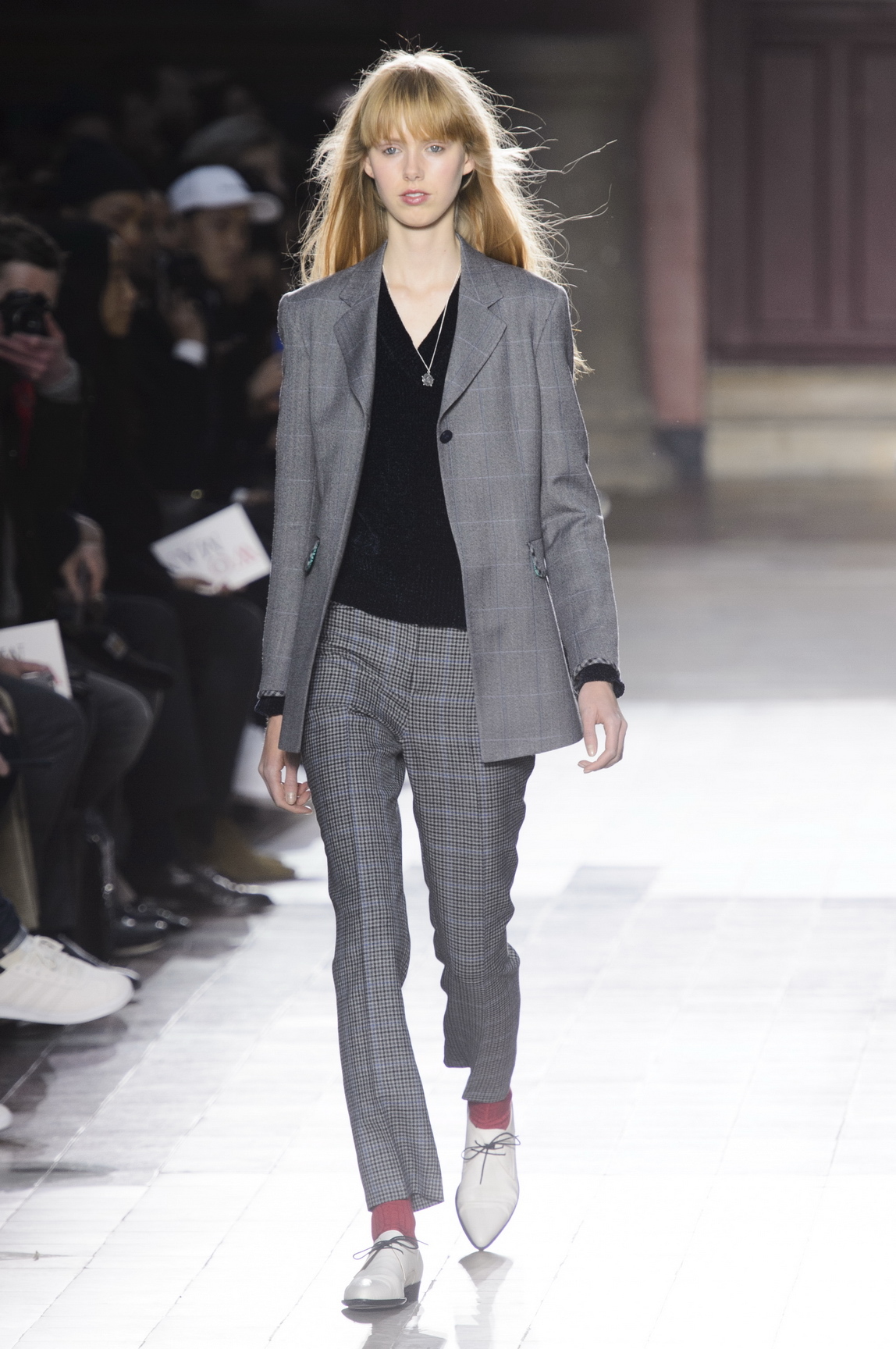
The designer had mined his own archives for the big outing — Anna Wintour on the front row — but it wasn’t about unisex the way those fashion greats styled and shot his menswear on supermodels before Sir Paul launched his womenswear in the early 90s. Here, his master tailoring was lady-fied. “The cut of the women’s very different to the cut of the men’s,” as he noted, while the menswear retained “a slight dandy feeling,” he said, referring to a 70s velvet suit that immediately made you think of his work for David Bowie. “But the velvet I used in the beginning was probably curtain fabric, because you couldn’t buy velvet for clothes then,” Sir Paul reminisced. The categorization of men’s and womenswear is a funny thing. At the end of the day, aren’t clothes just clothes but in different sizes?
Most designers would argue you’d have to re-cut a jacket designed for women to suit a man and perhaps vice versa, but looking at show-goers at these fashion weeks, few seem to mind. Men are wearing women’s coats in XL; women are wearing men’s blazers in XS. It’s a fuss-free approach to fashion that has a calming effect in these fashion week times of fusions and collaborations. Lucas Ossendrijver designs for Lanvin, one of the houses, which splits up its men’s and women’s lines into different concepts with different designers. (These also count Louis Vuitton, Dior and Dior Homme, Hermès, and Issey Miyake.)
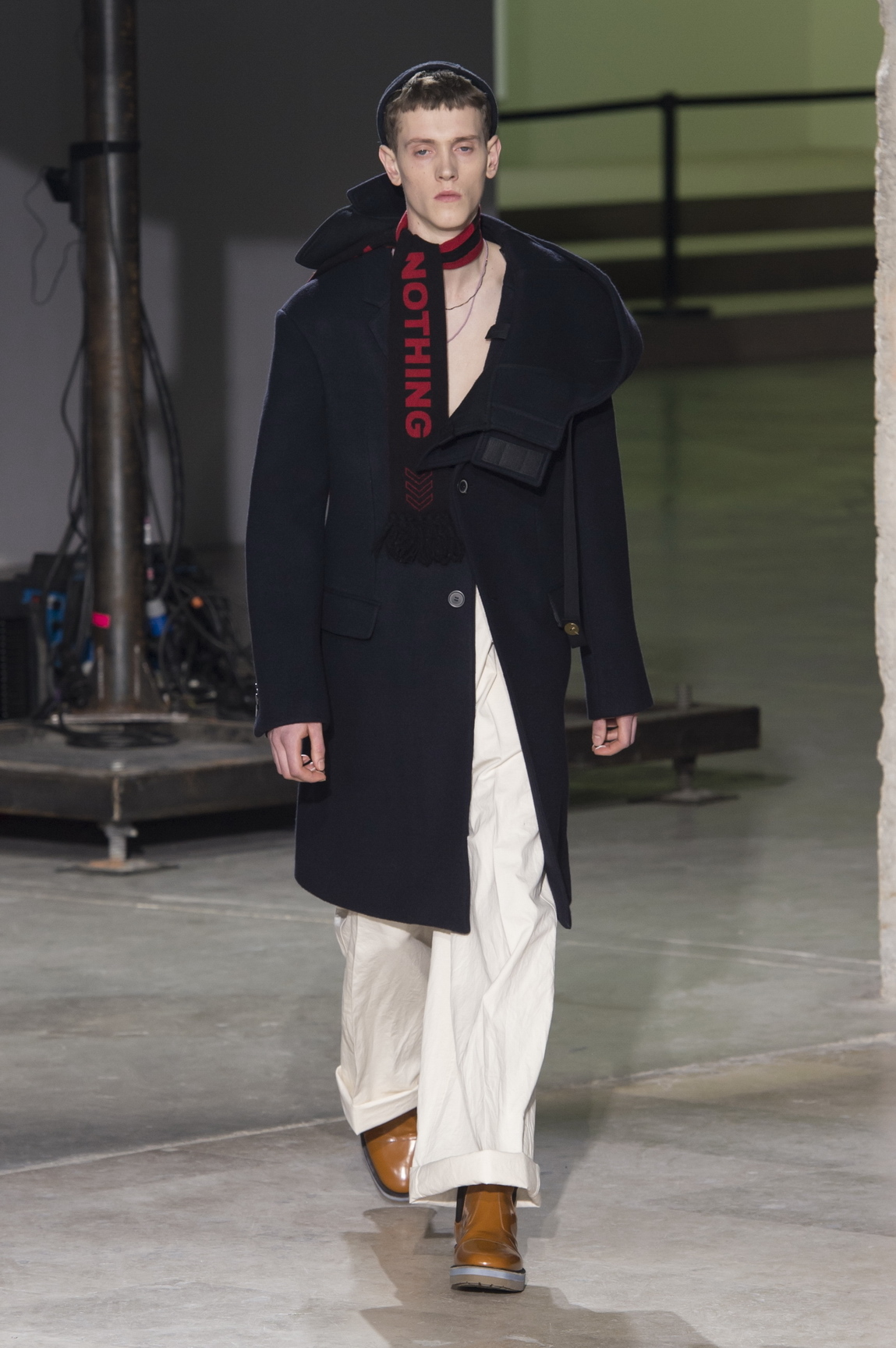
And so, on Sunday morning he wasn’t simply free from making decisions about co-ed show formats and unisex vs. his-and-hers, but able to focus on what he believes really matters in menswear at this point in time: “It’s things I believe people can relate to more — less fashion, in a way,” he said in a preview. “I look at the state fashion is in, and I think sometimes it’s about going very safe and classic, which I don’t believe in, because we need fantasy. For me fashion has always been an escape. For me personally, it was an escape. I wanted to go away from where I came from and I went to Paris. And I think fashion has that power and that role. We have to show another reality, take people somewhere. Sometimes you can go too far and it’s too extreme, and in the end nobody will actually wear it. So this season I wanted to go back to something a bit more relatable, but still elevated.”

His Lanvin collection was by no means “classics with a twist,” but rather men’s wardrobe staples re-constructed and re-proportioned to expert new heights, perfected in a way only a pragmatic designer mind like Ossendrijver could master. The show opened with a miniature football scarf (trend alert: they’re making a comeback this season) with the word “nothing” knitted into it. “It means no collaboration, no art, no print, no decoration,” he explained. “The whole collection for me is about what design is about: construction, proportion — how do you create a garment? Everybody knows the check shirt, the chino, the leather jacket, the parka. These are things every guy wears, which I see everyday and love. The question is, how do you elevate that? How does it become fashion? But without being extremely luxe — I wanted it to be a bit humble.”
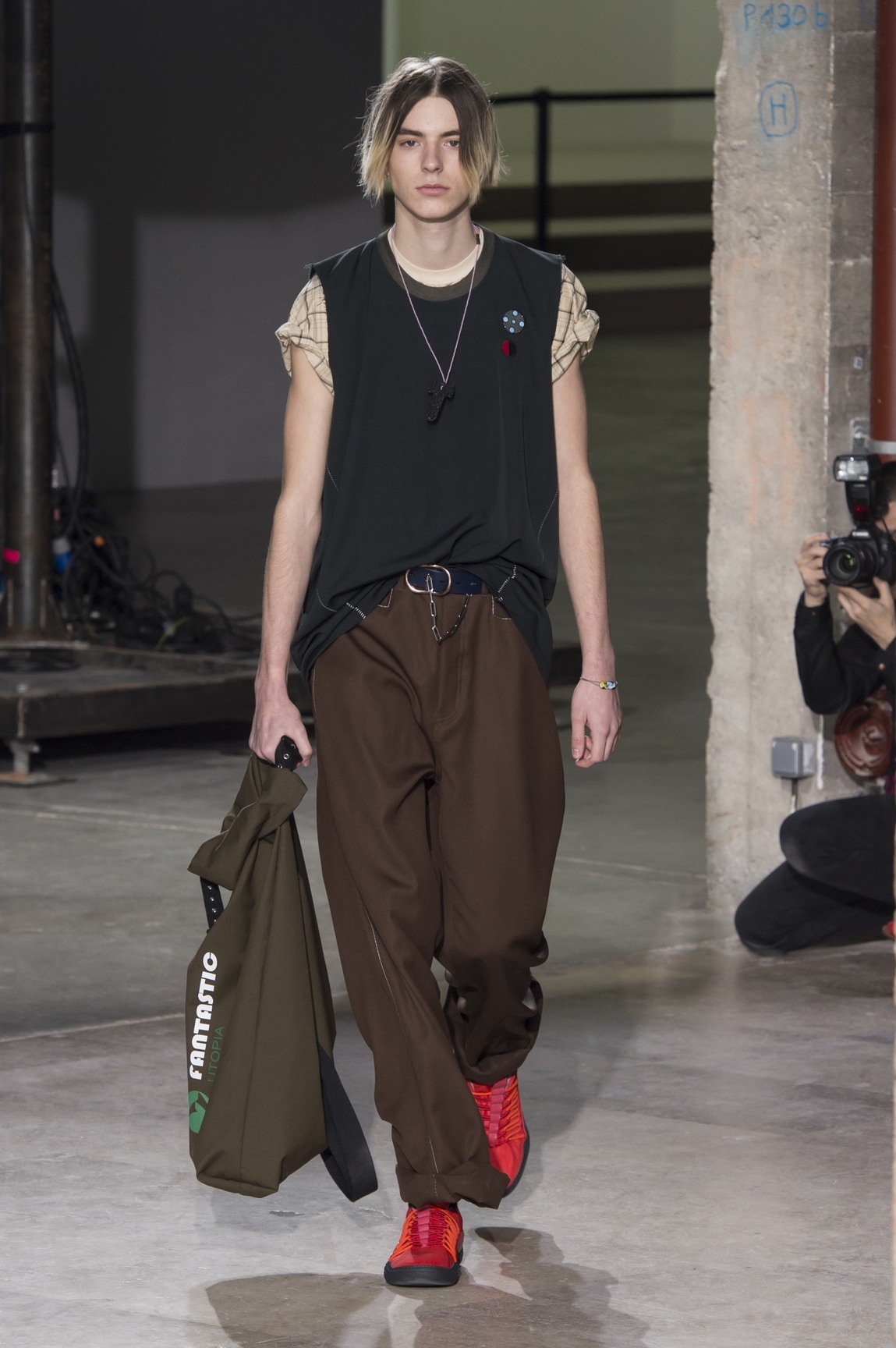
This was clothes-making at its core, reworking the institutions of menswear with no help from collaborators the way we’ve seen it on so many runways this season, no doubt a sign of the famous Vetements effect following the taste-making cult label’s all-collaborations show last July. At Kenzo, Carol Lim and Humberto Leon went for the big transition as well, but unlike other brands choosing to fuse their men’s and women’s show, they didn’t mix up the collections. Instead, the women’s show followed the men’s show in a 20-minute Kenzo experience set around an open backstage area.

They’d chosen to bring the backstage into the centre of runway, donating the saved show set budget to their favorite charities instead. Inspired by arctic surfing, the two collections were rooted in the same idea but they were far from his-and-hers. Lim and Leon were “celebrating the women and men, who experience as raw an environment as it gets, and hoping for it to continue forever,” they wrote in their show notes. Were the American designers referring to the co-ed show format or the global warming their new president shrugs off as phony? Probably both, and on a weekend that saw women marching against Trump and what he stands for, both statements were honorable notes on which to finish the fall/winter 17 men’s — and partly women’s — season in Paris. When the shows get their last hurrah in New York next week, these sentiments will doubtlessly echo even louder on American soil.
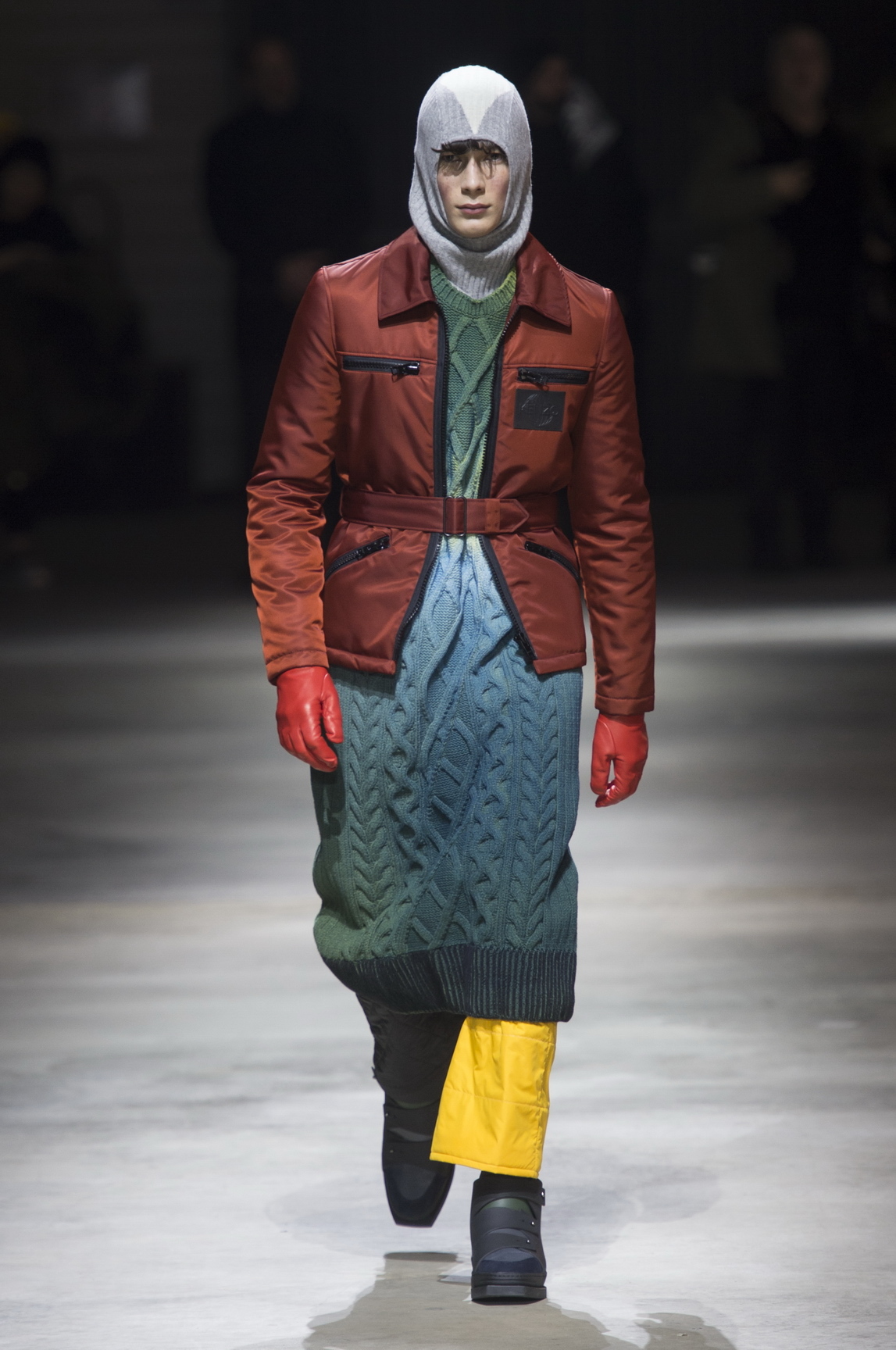
Credits
Text Anders Christian Madsen
Photography Mitchell Sams
